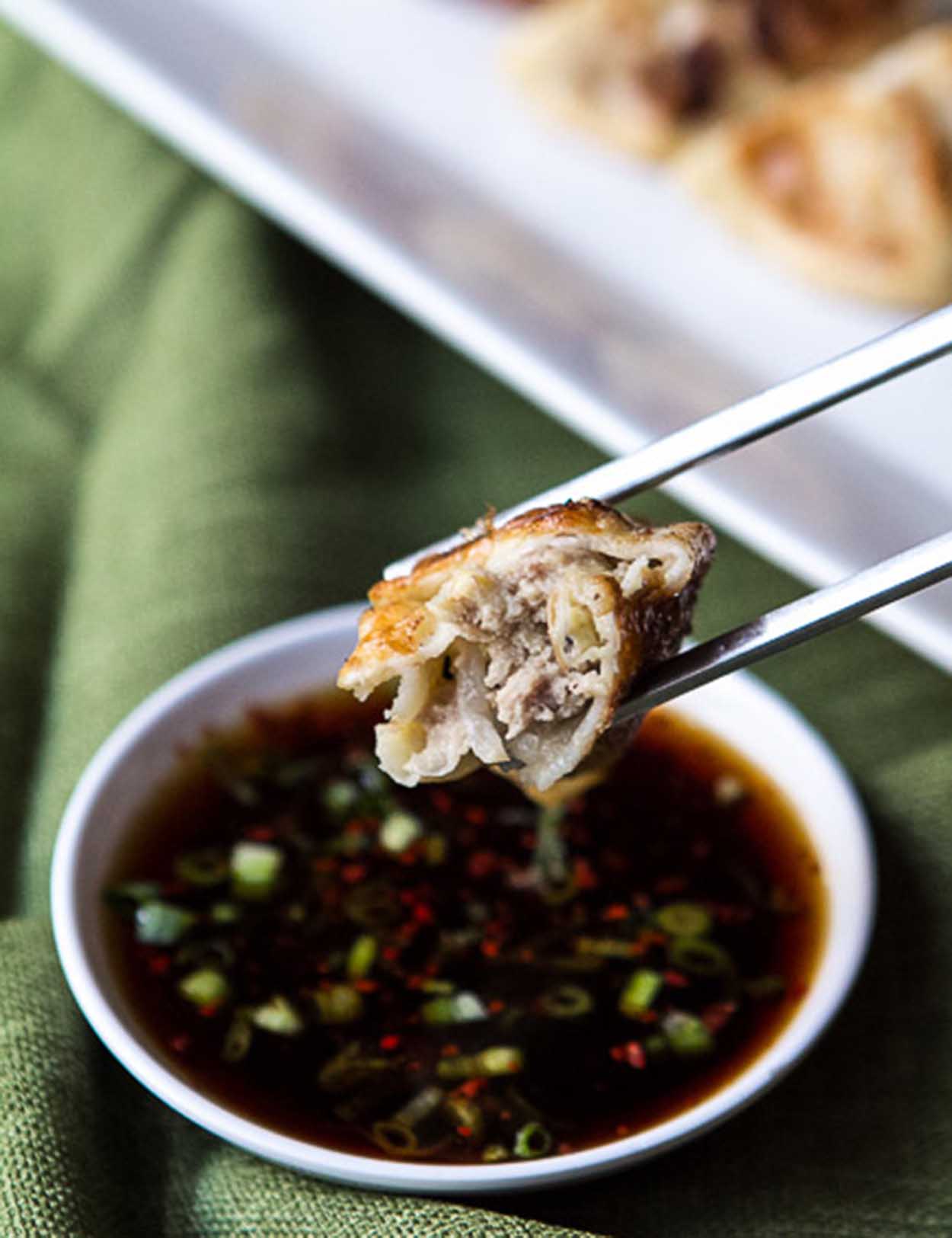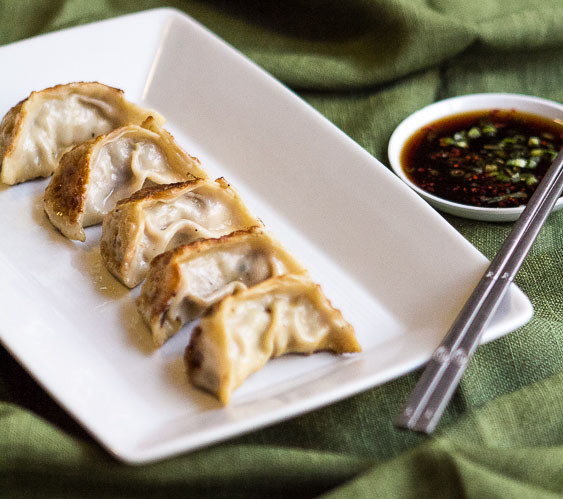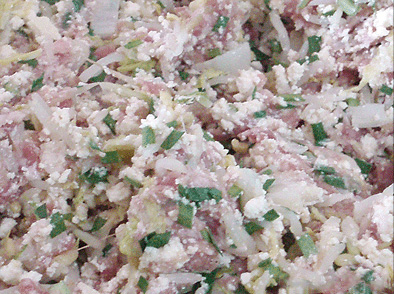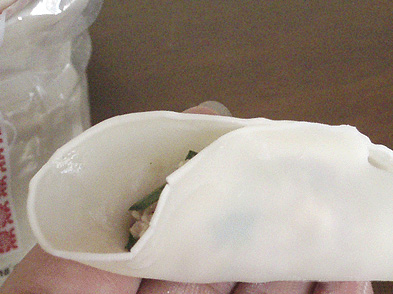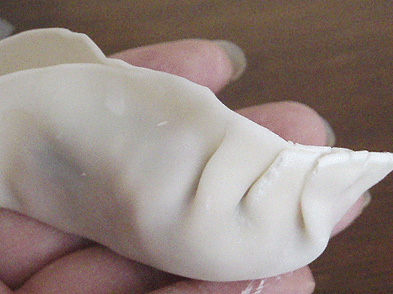And hey, talk about variety! Those familiar with Korean food will know that even the most basic meal has a number of different “banchan” to ensure different flavours, ingredients and textures can be enjoyed in the one meal. How about putting all that into every single bite?
Korean Dumpling Recipe
Back in the early days of this blog, I put up a pretty awesome family recipe for Korean dumplings (Mandu) that we’ve used and loved for many many years. Unfortunately, store-bought mandu tend to lack decent flavour or texture, and are an incredibly poor representation of what should be a fabulous dish.
Also Try: Lemon Cupcake Recipe
For this reason, my mother has always made huge batches of mandu for the freezer for us to enjoy. Whether in rice cake soup, just steamed or pan-fried, we never say “no” to these delights so it pays to make them in bulk and have them in the freezer to satisfy our dumpling cravings, or even when we want a quick and hearty dish in a flash.
But looking over that post now, I thought I could do a bit better to help instruct you, my readers, on how to make these beauties – so read on for a comprehensive guide on how to make your very own mandu recipe!
Here is The Korean Dumplings Looks Like
Mandu Recipe Ingredients
(makes approx. 100)
- 500g pork mince
- 300g dried tofu
- 2x medium-sized eggs
- 100g garlic chives or spring onion, finely chopped
- 1 heaped tsp minced ginger
- 4-6 tsp minced garlic
- 1/4 cup mirin
- 250g mung bean shoots
- 6 large leaves of napa cabbage (also called chinese cabbage) *
- 1-2 tbsp dark sesame oil (Asian sesame oil)
- 1x 500g pk dumpling skins (preferably gowzee/gowgee or gyoza)
- 1 egg white, lightly beaten
- Large freezer bags
- Freezer-safe plates or trays
Dipping Sauce Recipe
- 2 parts soy sauce
- 1 part rice vinegar
- Toasted sesame oil (optional)
- Cracked pepper (optional)
- Korean dried chilli powder (optional)
- Finely sliced spring onion (optional)
How to Make Korean Dumplings Recipe
1. Thoroughly wash your bean shoots, and bring a large pot of water to a rolling boil. Once the water is boiling, add the bean shoots and blanch for about 1-2 minutes, or till soft enough to bend in half but not mushy.
2. Once the bean shoots are blanched, drain but do not rinse with cold water as this causes them to get soggy and laden with water. Allow them to cool completely in a colander, tossing occasionally to shake off any water. Once cool, roughly dice into 2-3cm lengths and set aside.
3. Rinse the napa cabbage leaves, then bring another pot of water to a rolling boil. Add the cabbage leaves and blanch for about 3-4 minutes, or till the base of each leaf is *just* tender enough to pierce with a fingernail or chopstick. Drain well and allow to completely cool.
Also Try: Raspberry Clafoutis Recipe
Cut the base off each leaf, then cut into a rough 1cm dice and set aside.
4. Drain the firm tofu, then break into a mince with a potato masher/ricer/food mill. Make sure there are no large lumps left.
5. Taking small handfuls of the bean shoots, squeeze out as much water as possible from the entire batch and add to the tofu. Do the same with the cabbage, then add all the remaining ingredients and mix well to combine evenly.
Once the filling is made, it can be filled into any white dumpling wrappers (gyoza or gowee/gowgee) and folded however you like – to be cooked and enjoyed straight away or frozen for future consumption. Read on for my instructions on how to fold and how to best store/freeze dumplings!
How to fold dumplings
There are many different ways of folding dumplings recipe, and each shape has it’s good and bad points. The below instructions show you how to fold in my favourite shape, which lends itself to both panfrying and holds up well during steaming or boiling!
1. Place a teaspoon of filling in the centre of the dumpling wrapper, then dip a finger in the egg white and run it around the edges.
2. Pinch the two sides together by the centre, then grab a little of the wrapper next to the centre, fold it in on itself and press firmly to join.
3. Grab a little pastry next to the first fold, then fold it in on itself and press firmly to stick. You can usually get 3 or 4 folds to either side of the centre join, depending on the size of the wrapper and how much filling you’ve put in!
4. Swap to the next side and repeat, making sure to try and keep even spacing between each of the folds for neat presentation – though it makes no difference to flavour if they’re a bit wonky :)
5. Ta-da! One beautifully folded dumpling!
While you can leave the uncooked dumplings on a tray for half an hour or so, if you need to leave them out for longer then make sure to cover them with a damp teatowel so they don’t dry out! Unfortunately, dumpling pastry that has dried out cannot be rescued and will stay tough even when cooked.
However, if you want these for the freezer, then you can use my mother’s handy tip for storage -
One problem with freezing uncooked dumplings is that they can stick to the plate or tray that you’re freezing them on, making them difficult to remove and potentially causing issues with torn wrappers when you try and remove them. And god forbid you bag them before they’re frozen – this will cause them to freeze together into one solid mound so you have to cook all of them at once, or none at all :(
Also Try: Easy Grilled Shrimp Recipe To Try Tonight
Our way of overcoming that issue is to bag them before they are frozen! Place a plate or small tray inside a clean plastic bag, then arrange the dumplings on top so they are barely touching – as below.
Place the plate or tray inside the freezer, then allow to freeze solid (takes about 20 minutes). Once they are frozen rock hard, pull the bottom of the plastic bag (underneath the plate) over the top of the dumplings. Remove the plate, pull up – and you’ve got a bag of frozen dumplings! Tie the top up, and place the bag in the freezer – all done!
As you can see, this method comes in particularly handy when, for example, you’re a bit crazy like me and decide to make 200 dumplings in one day :)
Oh – and as for how to best cook them? My favourite way is pan-fried! However, you can’t just pan-fry dumplings as you’ll often find that the filling hasn’t cooked through by the time that the pastry is golden. You could always boil/steam them first then pan-fry them for texture, but this usually results in a dumpling that is wrinkled and lumpy all over, not to mention that the pastry will stick to the pan.
Also Try: Coconut Macaroons Recipe
The best way to pan-fry dumplings recipe is to fry – then steam – then fry again. The first fry ensures the pastry doesn’t expand or change shape too much, the steam cooks the filling, and the second fry restores that crunch and texture! Though it sounds really complicated, it’s actually easier than you think!
HOW TO PAN-FRY DUMPLINGS
1. Pan fry the dumplings till golden.
2. Fill the frying pan with enough water so it covers the bottom with about 1 cm of water. Place a lid over the top and allow to steam till the water has evaporated.
3. Since the steaming has made the pastry soggy, leave the dumplings on the heat to crispen up. They may have stuck to the pan when steamed, but given a few extra minutes, the skins will firm up to the point that they can be easily removed again.
4. Serve with dipping sauce on the side and enjoy!
